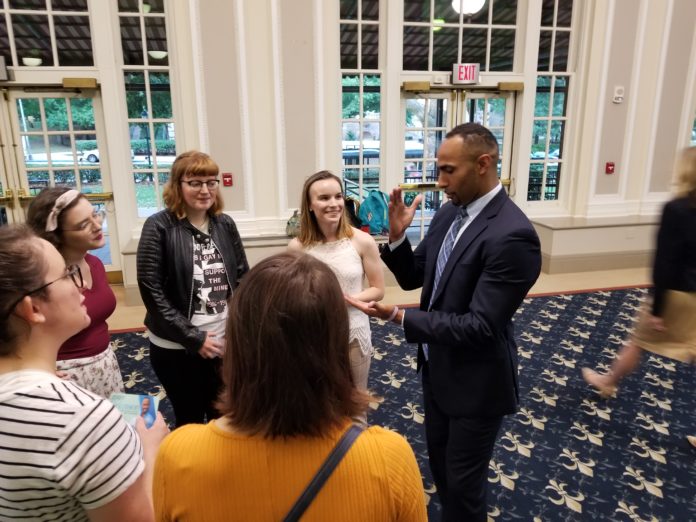Written by Emily Anna Keith
When I first meet Jerry Dickinson, he is dressed in a sharp navy blue suit and waving to me from across a courtyard at the University of Pittsburgh campus in Oakland. “Albert said you’d be here,” he remarks, referring to his Congressional campaign manager as we walk passed 4groups of students to a shady table in the corner.
Dickinson is a professor of Constitutional Law at Pitt, and as of May 2019, a candidate for the Democratic nomination to represent Pennsylvania’s eighteenth congressional district, which encompasses an area stretching from McKees Rocks to Plum, from Bridgeville down to Forward Township and up to the Allegheny River, stopping just before Blawnox and Etna.
His route to politics has been unconventional, he tells me as we settle into our seats. And it’s true: Dickinson’s has not been the expected path, in which a candidate typically begins by working for either a political party or one of its members, slowly moving up the chain, establishing connections until their opportunity to run for office emerges. Rather, Jerry Dickinson did not always envision himself campaigning for a governmental seat. In fact, there might have been a time when such an idea seemed a world away; particularly, he emphasizes, during his childhood.
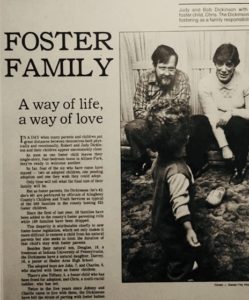 Dickinson’s youngest days were spent in the foster care system. Though he was adopted into a family, his experiences, he says, shaped his worldview and the way he views social problems, both as an individual and as an attorney and law professor. “I developed certain skill sets,” he tells me, “just by growing up in the environment that I did.” Referring to his adoptive family as a “multiracial sort of Brady Bunch,” Dickinson became familiar early in his life with systemic issues such as trauma, addiction, poverty, and incarceration, in addition to emotionally navigating multiple differing racial identities.
Dickinson’s youngest days were spent in the foster care system. Though he was adopted into a family, his experiences, he says, shaped his worldview and the way he views social problems, both as an individual and as an attorney and law professor. “I developed certain skill sets,” he tells me, “just by growing up in the environment that I did.” Referring to his adoptive family as a “multiracial sort of Brady Bunch,” Dickinson became familiar early in his life with systemic issues such as trauma, addiction, poverty, and incarceration, in addition to emotionally navigating multiple differing racial identities.
That navigation began within himself: though Dickinson refers to himself as Black or African-American, he grew up knowing he was born to a white mother and a Black father. His story begins in the 1980s. Because his biological parents were unable to care for him, he was placed in the Orphans Court division of Family Court, a subdivision that oversees termination of parental rights. At that point, he tells me, the child in question becomes a foster child under the protection of Allegheny County Children and Youth Services.
After entering Orphans Court, Dickinson was placed briefly in an emergency youth shelter, and moved from there to a family home in Shaler Township. This house, he says, was another sort of emergency foster home. The adults, Robert and Judy Dickinson, had told Children and Youth Services that they were not interested in adoption or long-term fostering but wanted to open their home to children in need. In total, they took in eleven foster children, with the intention of either transferring each child to an adoptive home, another foster home, or back to their biological parents. The goal of Children and Youth Services, Dickinson tells me, is generally to reunite biological families whenever possible. This process may involve parents undergoing drug rehabilitation, taking parenting classes, or any process deemed necessary by Family Court. Each case is unique, and getting families back together can take anywhere from weeks to years.
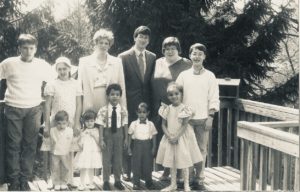 Robert and Judy Dickinson, though, were creating a new family of their own. Of the eleven foster children, Jerry Dickinson entered their home with, three were returned to their biological parents. The remaining eight, including Jerry, were adopted by the Dickinsons over a six-year span of time. Although his adoptive parents did not originally intend to adopt, he says, “certain things happened” and their family grew from four to twelve people (the Dickinsons have two biological children as well). “We joke,” he continues, “that I’m one of the lucky ones, because I was adopted so quickly. I was two, maybe just over two years old when I was officially adopted.”
Robert and Judy Dickinson, though, were creating a new family of their own. Of the eleven foster children, Jerry Dickinson entered their home with, three were returned to their biological parents. The remaining eight, including Jerry, were adopted by the Dickinsons over a six-year span of time. Although his adoptive parents did not originally intend to adopt, he says, “certain things happened” and their family grew from four to twelve people (the Dickinsons have two biological children as well). “We joke,” he continues, “that I’m one of the lucky ones, because I was adopted so quickly. I was two, maybe just over two years old when I was officially adopted.”
He was lucky, as were his other adoptive siblings. A continuous issue in the foster care system is the frequency of “drift,” the term referring to children moving from one shelter or home to another without truly landing anywhere. It’s something Dickinson saw a lot of growing up. “The older you get,” he relates, “and the older you are as a child in the foster care system, the less likely it gets that you will end up being adopted into a family.” Children and Youth services work to fight foster care drift as best they can, with the goal of placing each child in a stable environment, but because each situation is unique and social services systems are inherently imperfect, drift persists.
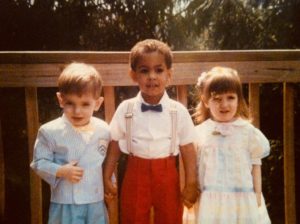 While drift was not an issue personally for Jerry Dickinson, his experience growing up in an adoptive family still came with emotional baggage and trauma, especially with regard to race. He describes his Shaler neighborhood as “post World War II, with cookie-cutter houses and everything.” And because Dickinson is Black, but his adoptive parents and some of his adoptive siblings are white, he found himself in a unique dynamic, forced to grapple with questions of race and identity from his earliest days. The people in his house had to learn how to become a family, to grow into one, to acknowledge their questions and assumptions about the world and their experiences within it.
While drift was not an issue personally for Jerry Dickinson, his experience growing up in an adoptive family still came with emotional baggage and trauma, especially with regard to race. He describes his Shaler neighborhood as “post World War II, with cookie-cutter houses and everything.” And because Dickinson is Black, but his adoptive parents and some of his adoptive siblings are white, he found himself in a unique dynamic, forced to grapple with questions of race and identity from his earliest days. The people in his house had to learn how to become a family, to grow into one, to acknowledge their questions and assumptions about the world and their experiences within it.
Part of that process was recognizing their differences, Dickinson says. “Many of my siblings also have [biological] siblings of their own,” he tells me, “so we were separated into those different families.” And from the beginning, Robert and Judy coordinated with the adoptive and foster parents of those children, which Dickinson says was good, but could also be emotional and traumatic, adding to what he terms the “personal baggage” carried by each child in the foster care system.
Childhood trauma is an unavoidable component of the foster care system. Many of Dickinson’s siblings left home early due to addiction or other problems, which he connects to their emotionally compromised histories, and that he says lead to behaviors that are destructive personally, to the family, or both. And as a result, Dickinson has found himself “intimately associated with issues relating to addiction, poverty, incarceration, homelessness, joblessness, [and] the social welfare system.” His adoptive siblings, he remarks, have struggled with the same issues and societal problems faced by millions of Americans.
And Dickinson has stayed involved with those issues. His family remains very tight-knit, and he has gone, he tells me, “to places I think a lot of people have not been to, places in the city of Pittsburgh, some of the poorest neighborhoods, where my siblings have had to live.” He has been inside prison walls, visiting folks, “some African-American, some white.” He has intimated himself with the social welfare system, working to help his siblings gain access to the resources they need, siblings who did not have access to higher education or who are single parents. And through it all, he says, his family has seen each other as equals, shaping each others’ world views and remaining supportive of their individual endeavors.
Dickinson’s family fundamentally shaped the way he interacts with the world, how he understands the oppression and inequalities built into its social systems. What’s more, it influenced his professional pathways. “You can never really remove yourself from these problems,” he states. “I have brothers and sisters living in poverty, struggling with addiction and with the criminal justice system and [its] collateral consequences. And so I think it’s extremely important for anyone who’s interested in public work, public service, to be that closely connected and associated with those worlds. It helps shape policy and does it for the right reasons.”
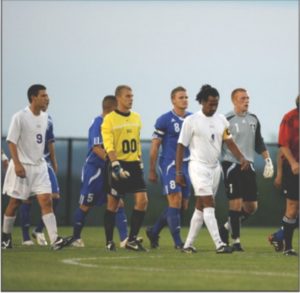 While Dickinson was already on a path to public service, running for office was not always his plan. During his undergraduate education, he asked himself how he could acquire the tools to affect change in his community. The answer came in the form of a Fulbright Scholarship. After graduating from College of the Holy Cross in Worcester, Massachusetts in 2009, he embarked on a year-long journey to Johannesburg, South Africa, to work alongside lawyers there representing impoverished tenants in eviction cases. Due partly to the city’s high immigration numbers, it is rife with socioeconomic tensions and inequality, particularly for its Black residents. “We represented indigenous tenants and mostly squatters in the inner city slums,” Dickinson says, “and [in] the shanty towns on the outskirts, the poorest of the poor, some of the most destitute places.” Many lacked access to basic utilities like water and were not habitable, with landlords eager to push tenants out to make way for wealthier residents and renovation projects. What was happening, he tells me, is “an incredible number of arbitrary evictions,” events in which hundreds of tenants were evicted from full buildings in a single evening, often by force via private security companies hired by landlords or by the Johannesburg police.
While Dickinson was already on a path to public service, running for office was not always his plan. During his undergraduate education, he asked himself how he could acquire the tools to affect change in his community. The answer came in the form of a Fulbright Scholarship. After graduating from College of the Holy Cross in Worcester, Massachusetts in 2009, he embarked on a year-long journey to Johannesburg, South Africa, to work alongside lawyers there representing impoverished tenants in eviction cases. Due partly to the city’s high immigration numbers, it is rife with socioeconomic tensions and inequality, particularly for its Black residents. “We represented indigenous tenants and mostly squatters in the inner city slums,” Dickinson says, “and [in] the shanty towns on the outskirts, the poorest of the poor, some of the most destitute places.” Many lacked access to basic utilities like water and were not habitable, with landlords eager to push tenants out to make way for wealthier residents and renovation projects. What was happening, he tells me, is “an incredible number of arbitrary evictions,” events in which hundreds of tenants were evicted from full buildings in a single evening, often by force via private security companies hired by landlords or by the Johannesburg police.
Dickinson’s team fought in court to set precedents of basic legal rights for squatters, who “didn’t really have property rights,” he says, but needed shelter, needed a place to stay. Many people he worked with were among the poorest and most vulnerable city residents. Many were single mothers with multiple children, many had never seen access to any sort of education. All were completely susceptible to the power structures at hand, the socioeconomic systems designed to keep them down.
His experience in South Africa proved extremely valuable for Dickinson’s professional life, and upon arriving back to the United States, he began doing similar work in New York City. After starting his law education at Fordham University, he interned at Reed Smith, where he was part of a team that started the Housing Rights Project, an organization that collaborates with local legal services to represent evicted tenants. He tells me the story of one tenant, a young woman of color who was pregnant and had just been evicted from her apartment for a lease violation recorded by her landlord three years prior to her eviction. It was the type of thing that happened every day in the city, he says, and his client was one of the thousands of people subjected to its broken rent system.
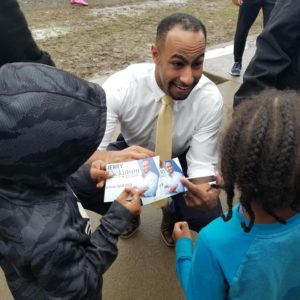 Another component of Dickinson’s time in New York was his frequent trips back to Pittsburgh. His parents were experiencing health problems at the time, and Dickinson traveled back approximately every two weeks to care for them. He was still in law school then, too, and describes that period of his life as a blur. At one point, exhausted, he realized he needed to move back permanently, that his family needed him in Pittsburgh. He had never envisioned himself returning, he says, but he did so after receiving his law degree, and his stay since has only been interrupted once, by a clerkship for a federal judge in Philadelphia. Dickinson joined the University of Pittsburgh law faculty the following year, at the age of 29, where he specializes in teaching Constitutional Law.
Another component of Dickinson’s time in New York was his frequent trips back to Pittsburgh. His parents were experiencing health problems at the time, and Dickinson traveled back approximately every two weeks to care for them. He was still in law school then, too, and describes that period of his life as a blur. At one point, exhausted, he realized he needed to move back permanently, that his family needed him in Pittsburgh. He had never envisioned himself returning, he says, but he did so after receiving his law degree, and his stay since has only been interrupted once, by a clerkship for a federal judge in Philadelphia. Dickinson joined the University of Pittsburgh law faculty the following year, at the age of 29, where he specializes in teaching Constitutional Law.
Currently, Dickinson’s days are often non-stop, packed with a variety of engagements and activism work. The day before we spoke, a Tuesday, he taught an upper-level law course in the morning before sitting on a faculty panel discussion about impeachment. Immediately following that, he continues, “I put on my activist hat and went up to the Hill District,” where, assisted by law students, he represents an advocacy group focused on creating a community land trust. The trust preserves affordable housing for low-income families, allowing them to become homeowners. Then it’s on to a campaign event, meeting district residents and talking about his political platform. And finally, he returns home to his wife and daughter. Being a father is the most important role in his life, he says. There is a common thread in everything he does –activism, law, candidacy, family life — that reaches back to his childhood. His daughter’s upbringing, Dickinson states, is so drastically different than his own, but he uses his experiences to be a better parent, and by extension, a more informed citizen.
Part II of this series will explore Dickinson’s candidacy and political platforms, what he wants to accomplish and how he aims to do it. It will examine his unique entrance into politics, as a legal scholar and activist with years of personal experience in socioeconomic issues — as opposed to working his way up through party offices — and the advantage it gives him in appealing to voters, and more importantly, in serving his constituents.



